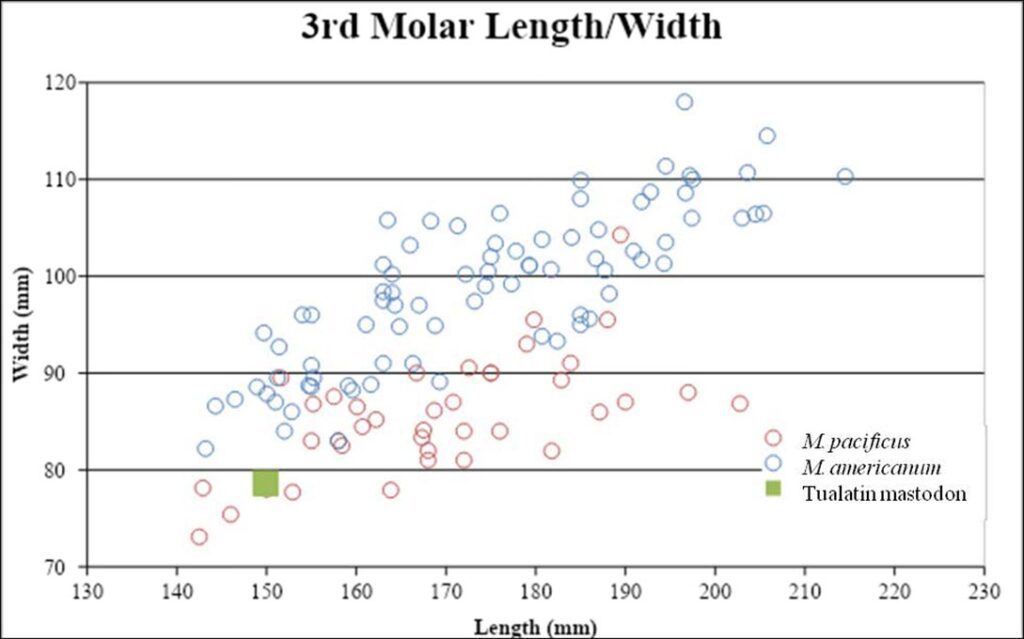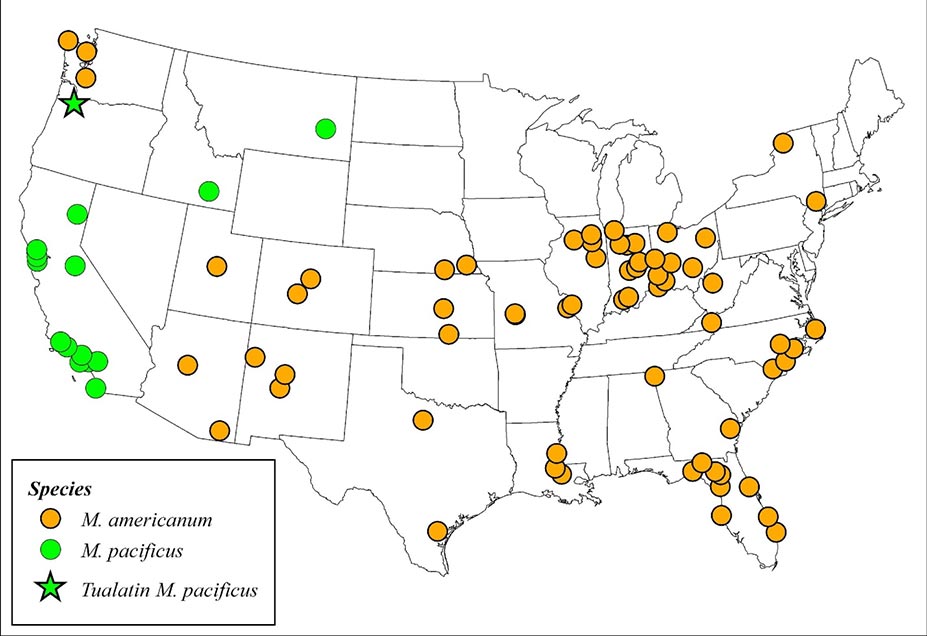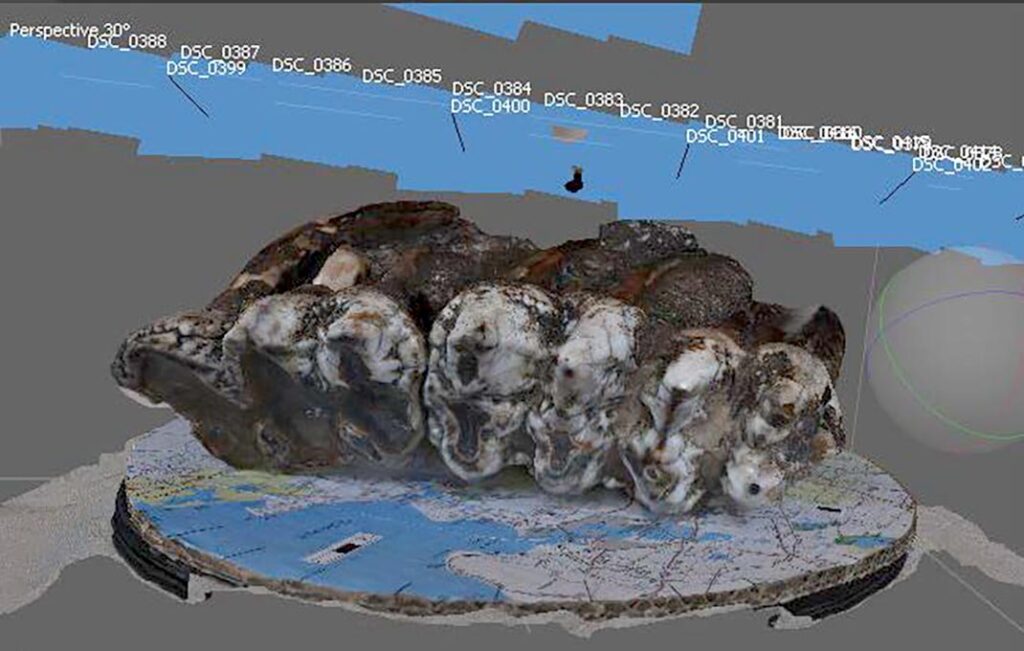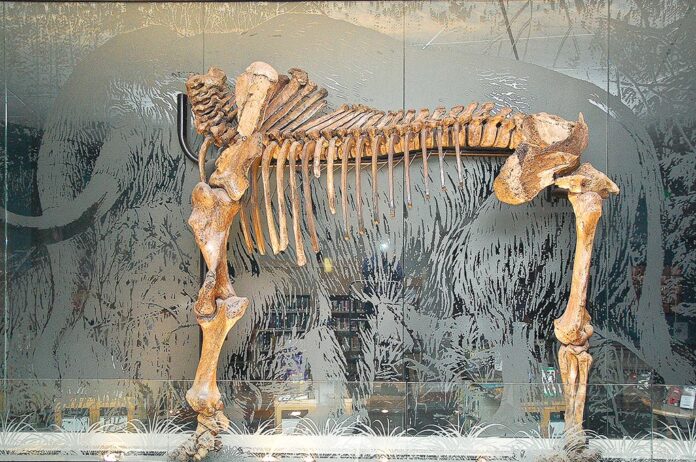The mastodon has figured prominently in the American imagination since the nation’s founding. Thomas Jefferson, who was famously obsessed with the animals, had bones laid out for study in the White House and is even rumored to have instructed Lewis and Clark to gather evidence of living elephants in the interior of North America. This was before the concept of extinction was widely accepted, which was sadly the fate of these unique animals.

After 250 years of mastodon research, we thought we knew these animals pretty well. They typically inhabited woodlands and swamps, browsing on woody vegetation. They have been found across all of North America, from the Arctic to the Pacific Northwest to Central America. We had also believed there was only one species of mastodon, with some regional variation in their shape and size. Now, however, it appears that there is much more to the mastodon story—and Oregon may be key to expanding our understanding of these iconic animals.

Large fossil sites recently discovered in California and Colorado have precipitated new research on western North American mastodons. In an article from just last year, Alton Dooley Jr. and a team of researchers from the Western Science Center in Hemet, California, found that mastodons are not all the same. Some mastodons had teeth that were markedly narrower, and these narrow-toothed mastodons lived exclusively in the western United States. The researchers demonstrated through statistical analysis that these western mastodons were, in fact, distinctive enough to warrant a new species classification, and the Pacific mastodon (Mammut pacificus) was thus identified. None, however, were found in Oregon.
Inspired by the recent discovery of the Pacific mastodon, I, along with colleagues Chris Widga from the Center of Excellence in Paleontology at East Tennessee State University and Emil Karpinski at McMaster University, became curious about why this new species hadn’t turned up in Oregon. To find specimens to study, we turned to Danny Gilmour’s recent research on Pleistocene animals from the Willamette Valley. He had only found a few mastodon fossils, but fortunately there was a very intriguing specimen among them: the Tualatin mastodon.
On a recent visit, I was allowed to take detailed measurements of the Tualatin skeleton and take hundreds of photos to create a three-dimensional model of the teeth. After comparing the measurements of the teeth, it is clear that the Tualatin mastodon is indeed a member of the newly defined Pacific mastodon species, making it the first reported specimen in Oregon and the northernmost specimen on the Pacific Coast. Interestingly, nearby specimens uncovered in Washington are reportedly not members of this new species. This raises new questions: Are the Washington specimens simply misidentified, or did two distinct mastodon species live in close proximity?

While it seems that there are more questions now than before, that is the nature of scientific inquiry. Our team seeks to continue study of the Tualatin Mastodon while expanding our investigation of the geographic extent of the Pacific mastodon in Oregon and throughout the Pacific Northwest. Stay tuned.
Tualatin Ice Age Foundation
Three important historic and scientific discoveries about the Tualatin area which happened during and after the ice ages have been made recently or are being studied in the Tualatin area, causing interest in the creation of the Tualatin Ice Age Foundation (TIAF) and plans to create an Ice Age Interpretive Center for the public.
Many individuals, city and county officials and organizations, Portland State University, University of Oregon, plus several businesses such as Center Cal and Chamber of Commerce have shown interest in the interpretive center to display more ancient animal bones found in the area, plus local ice age flood history and local Native American history. Organizations such as the Ice Age Floods Institute and Willamette Valley Pleistocene Projects are also helping.
The three areas of interest at present in ice age history are:
- Fossil bones of the 29-year-old female mastodon that lived in the Tualatin wetlands behind Fred Meyer store more than 12,000 years ago. The bones are now on display at Tualatin Library and Tualatin Heritage Center. (see accompanying report above by Andrew Boehm, Ph.D.)
- The Ice Age Floods of between 15,000-18,000 years ago which came from Lake Missoula, Montana, roaring down the Columbia into Willamette Valley as far as Eugene, plus into Tualatin Valley and Yamhill Valley, bringing rich soils and huge erratic boulders in icebergs– and even a meteorite. You can still see the huge boulders and crop farms from rich soils.
- The rich history of the local Native Americans who lived here, such as the Tualatin (Atfalati) band of the Kalapuyans, now a part of the Consolidated Tribe of the Grand Ronde.
The Tualatin Ice Age Foundation is awaiting a video of the ice age history of the area, which was funded by the City of Tualatin and a private foundation that should be available in March. It will assist in public explanation, further funding requests and location of the new Interpretive Center.
Helping Andrew Boehm with the current U of O project regarding DNA and designation of the Pacifica species, the first in Oregon, are many experts and hobbyists in the geology and ancient history of Oregon and volunteers such as Dr. Scott Burns, PSU; Jerrianne Thompson, Tualatin Library Director; Linda Moholt, retired Chamber executive; Yvonne Addington and Cindy Leigh, Tualatin Historical Society; Mike Full, founder of Willamette Valley Pleistocene Projects; David Ellingson, Woodburn teacher and consultant of ancient bison bones at Woodburn high school and mastodon/mammoth bones at Oregon State University. Sylvia and Rick Thompson, Ice Age Floods Institute; Paul Hennon, retired city park director; Daniel Gilmour, thesis writer and author of local history of ancient animals.
Stay tuned for future stories regarding Tualatin Mastodon and other ice age history in your backyards. For more information, contact Scott Burns, Yvonne Addington, Jerianne Thompson or Linda Moholt. More next month.
– Yvonne Addington




















